If you have ever wanted a blueberry sauce recipe that will work with only four ingredients – water, sugar, salt, and fresh blueberries – packs a lot of sweetness, takes less than ten minutes to prepare, and can be used to garnish pancakes, drizzle on lemon cheesecake, top Belgian waffles, spoon over angel food cake, accent breakfast muffins, heap over deep fried fruit-filled fritters, use as a sauce for ice cream, or even be used on specialty panini sandwiches, look no further.
[mainbodyad]This is my personal favorite way to make a standout blueberry sauce if you don’t want to use canned fruit fillings, which are full of preservatives, artificial sweeteners, and chemicals. The same basic process was used to create the Thanksgiving cranberry sauce garnish, only in that case the finished product was put in a very cold refrigerator to drop the temperature so it could solidify to the point of being used to accent the flavor of the turkey.
I’m going to teach you the entire process, documented in pictures. I don’t care if you normally burn toast, I’m going to make this simple enough that you will be able to make blueberry sauce in your sleep, perfectly finished every time. Grab a pan and get started! I have faith in you! What we are doing essentially mirrors some of the steps involved with making jams and jellies – we have to dissolve fruit into a sweet mixture, then boil off the water content so it thickens. The difference? The sauce is meant to be organic and fresh – that means you have to use it within seven days, otherwise it will go bad. You don’t need to make big batches so that shouldn’t be a problem.
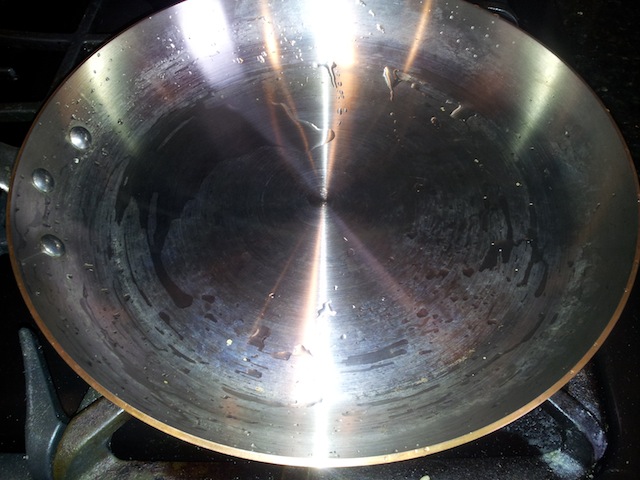
Begin with a large pan with a lot of surface area. My preferred tool is the 12″ Mauviel Professional 2.5 mm copper fry pan. I use it for nearly everything and cannot recommend it highly enough. The temperature disbursement, the speed of heating, and the heft make it the best option for the job.
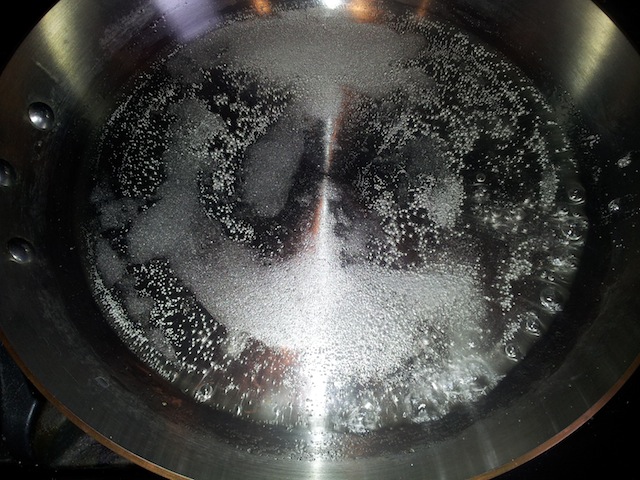
To begin making your blueberry sauce recipe, add 1/2 cup of cold water, 2/3 cup white sugar, and 1/8th teaspoon of salt to the pan. Turn it on over high heat and mix until boiling. As the water temperature rises, the chemistry changes and the water can hold more of the sugar so you will begin to see it dissolve into a liquid. The salt, on the other hand, raises the boiling temperature of the water. This should take less than a couple of minutes on high heat.
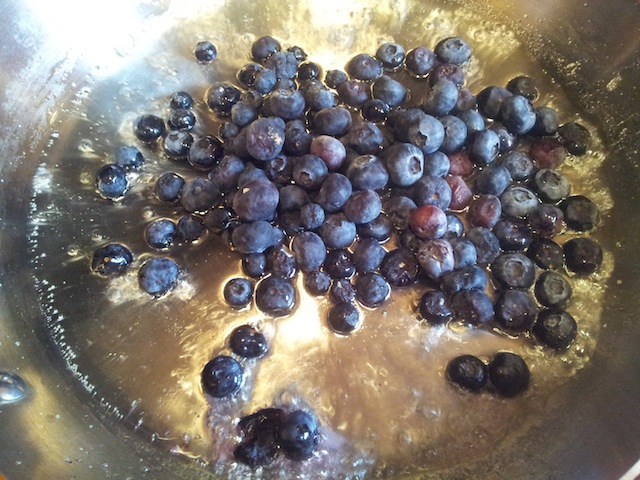
After the base of your blueberry sauce has boiled, add 8 ounces of fresh blueberries.
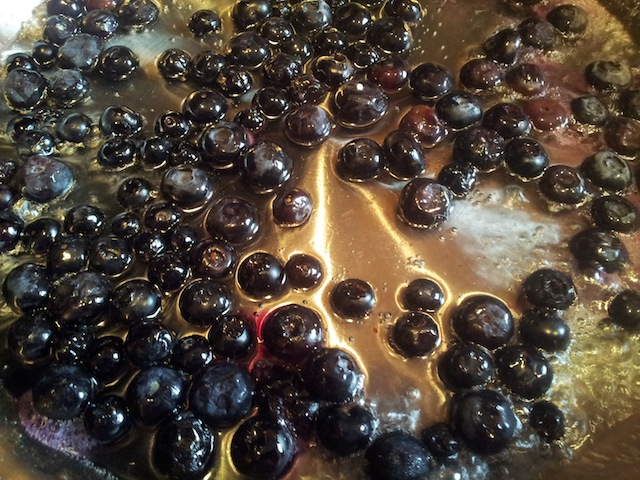
As the heat works on the blueberries, you will begin to see the blueberry sauce develop as the color and flavor soaks into the sugar, water, and salt mixture. It will begin to smell like freshly baked blueberry muffins.
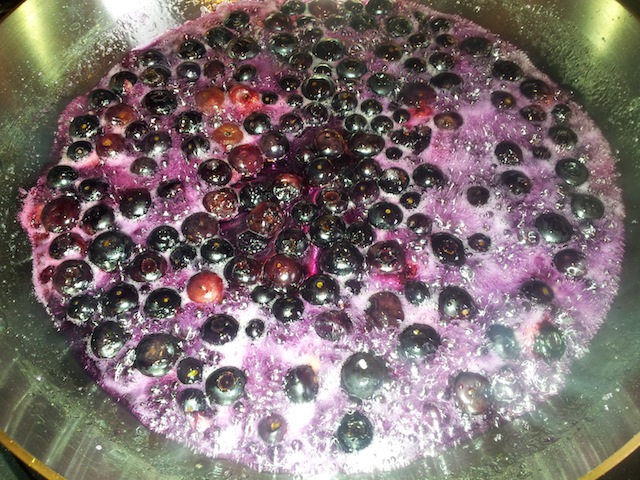
Continue to let the blueberry sauce boil until it starts to foam and bubble. The water content is cooking off and leaving the pan in the form of steam, reducing the moisture in the sauce, thickening it.
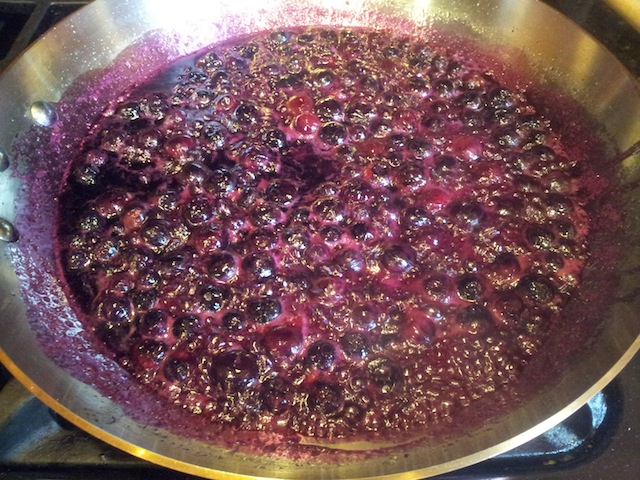
Now, you need to constantly stir the blueberry sauce as it thickens. You will begin to notice some blueberries dissolving, and the liquid becoming thicker and thicker. By this point, you will have been cooking 5 to 7 minutes.
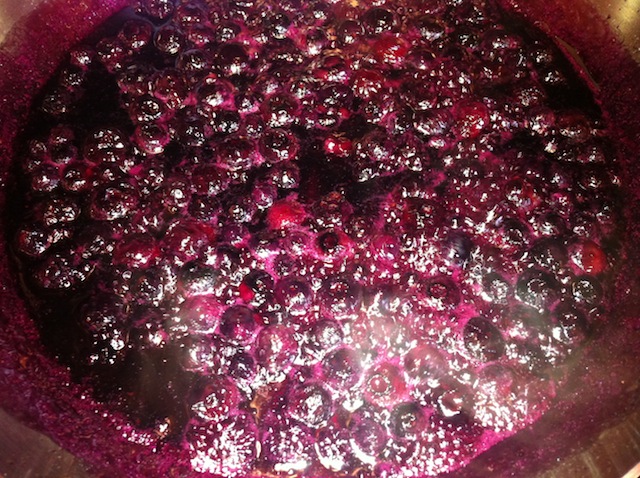
In the final few minutes, your job is to thicken your blueberry sauce. You know it is done when you stir the pan with a spatula and the liquid takes a half second to second to fill back in when you’ve cleared a path along the bottom. When this happens, turn off the heat.
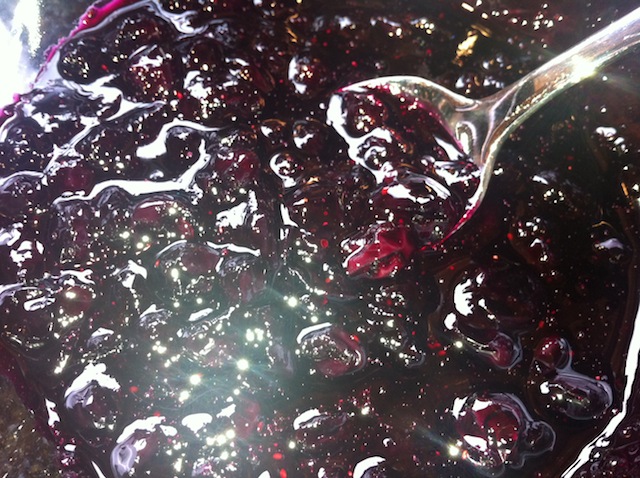
Immediately after turning off the heat, stir a few more times, then pour the contents of the pan into a mixing bowl to cool, scrapping the pan with your spatula to get as much blueberry sauce as you can into the bowl.
The blueberry sauce can be served warm, drizzled over cakes, pies, waffles, or pancakes, or you can refrigerate it to thicken the consistency significantly, then later serve over chilled lemon cheesecake. It packs a lot of sweetness and makes an excellent flavor garnish. The basic premise can be repeated using strawberries, cranberries, and other fruits. It is a tremendous tool to have in your back pocket if you need to add a lot to the depth of a dish without introducing many ingredients, preservatives, or artificial sweeteners.
[mainbodyad]

